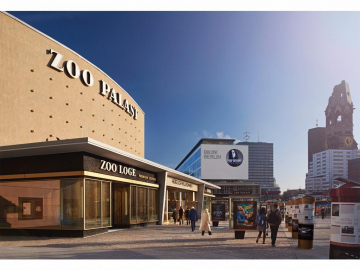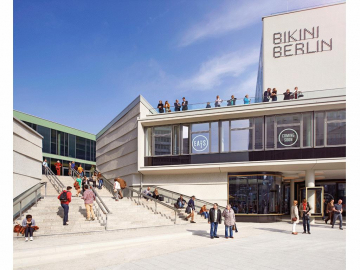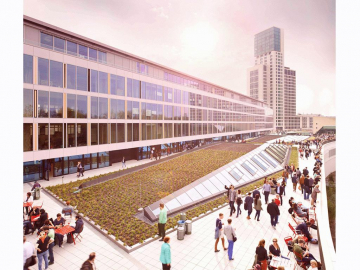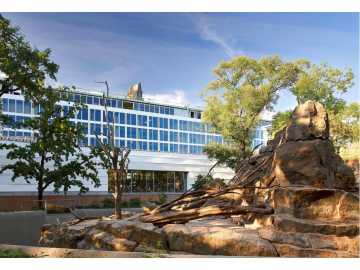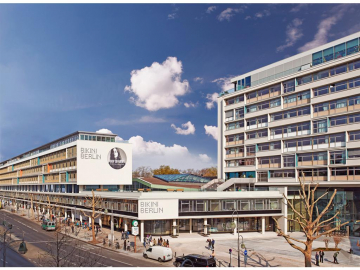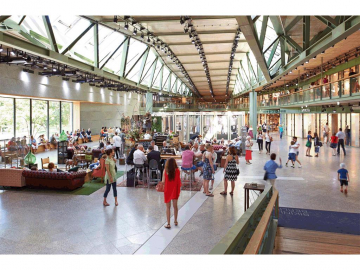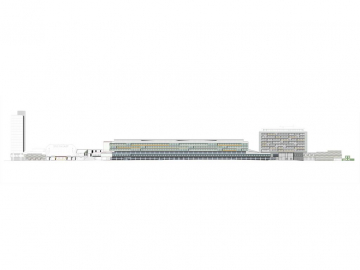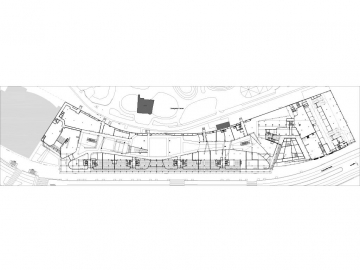Bikini Berlin
Revitalisation BIKINI BERLIN
In 2012, Hild und K Architects Berlin office, spearheaded by Dionys Ottl, was given the task of bringing BIKINI BERLIN back to life. The construction site of Bayerische Hausbau had been there for over a year at that stage. The architects were asked to rework the plans of SAQ architects to make them more practicable and to ensure in particular that the regulations for listed buildings were adhered to. The listed group of buildings designed in the 1950s by Paul Schwebes and Hans Schozsberger consist of the Bikinihaus, opposite the Memorial Church, the large skyscraper at Hardenberg Square, the cinema Zoopalast, the small skyscraper and the multi-storey car park at Elefantentor. The Bikinihaus in particular has come to symbolize the post-war reconstruction era. It bestowed the ensemble with its name and became its centrepiece, albeit over the years, the building had largely deteriorated. This memorial building was also to become the focus of architectural continuity. Meticulous care was taken to reconstruct the original façades: The Bikinihaus is characterized by its vibrancy, which after reconstruction offers space for restaurants, shops and offices. The façade has projections and recesses of reinforced concrete and bands of ornamented windows and glass balustrades giving it a light woven structure. The delicate elegance typical of the 1950s of profiles and original colors werent that easy to recreate in the new construction, due mainly to todays strict energy-saving regulations. The southern facing façade of the small skyscraper was carefully reconstructed, today houses a design hotel. The history of the existing buildings is continued in the materials of the new facades: The reconstruction required replacing a number of historical constructs and materials, for example the colored glass panels on the old facades. Some of the old substance was saved and integrated into the new construction. The original glass surfaces were shredded and used in the rendering of new insulated building parts. The old materials have come to life again. They have given rise to associations and have opened a dialogue between the buildings new usage and its history. The impression of lightness and transparency also characterizes the interior of the annexed building, the newly established Concept Mall. The leading metaphor for this building, which reaches up to three stories and is built over the former delivery yard, is that of a great bridge. This association is underlined through the carrying beams of uncovered steel, which dominate the large three-part hall on the ground floor. The 4 x 14 meter large window opens the hall on to the neighboring zoo, where baboons squat on their ape rock. The interior is kept in shades of green making direct reference to the zoo. Materials like the large oak slabs and wooden parquet, the raw reinforced concrete and simply waxed steel accentuate the concept of authenticity. The roof of the Concept Mall has become the connecting element between Breitscheidplatz and the zoo. It is a terrace open to the public covering 7,700 m² and accessible via a stadium-like flight of stairs on the inside and a large open flight of stairs from the forecourt at Budapester Strasse. With the reopening of BIKINI BERLIN on 3rd April 2014, Berlins City West has retrieved one of its landmarks. It was coordinated with the Office for Urban Planning and Monument Preservation. The realization of the elaborate redevelopment and reconstruction measures were coordinated closely with the Historic Monuments Protection Authorities. The Bikinihaus earned the LEED Gold Certification for sustainable building. The construction costs reached a three-digit million Euro range.
Area: 21.694 m²
Gross Floor Area:
Cinema Zoopalast 9.145 m²
Bikini Haus 51.252 m²
Hotel 12.086 m²
Multi-storey Car Park 12.128 m²
Other 408 m²
Total: 85.021 m²

